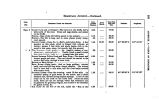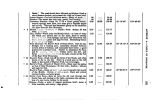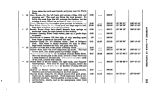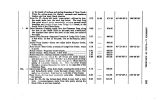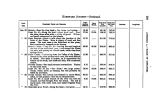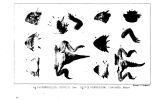| OCR Text |
Show 2S0 VALLEY OF GREEN BITER. a pretty little stream of good water, which also takes its rise in the Bear- river Mountains, near the heads of Black's Fork, into which it falls about twelve miles below Fort Bridger. Continuing in the valley of Black's Fork, after a march of nearly eighteen miles encamped on its right bank, about half a mile above the mouth of the Muddy, another affluent coming in from the left. Lat. 41° 28' 56". 38; long. 110° 18' 50". Since leaving the basin and entering the valley of Green River, a remarkable change in the face of the country is apparent. Instead of the disturbed and upheaved rocks which characterize that region, flat tables or terraces of horizontal strata of green and blue sand and clay, and sandy conglomerate, or agglutinated sand, now form the principal feature of the country, standing alone, like island buttes, amid the barren plains, or forming escarpments which alternately impinge upon the banks of the winding streams. These tables, which extend from the rim of the basin to the South Pass, and thence to Brown's Hole on Green River, are apparently the result of a deposite in still water. The layers are of various thicknesses, from one foot to that of a knife- blade, and the hills are fast wearing away under the influence of the wind and rain. The whole country looks as if it had, at one time, been the bottom of a vast lake, which, bursting its barrier at Brown's Hole, had been suddenly drained of a portion of its waters, leaving well-defined marks of the extent of the recession upon the sides of. these isolated buttes. As the channels became worn by the passage of the water through the outlet into Green River, another sudden depression followed, and the same operation was repeated at still a lower level. There are three well- defined levels, and the same appearances of horizontal water- lines occur here as were noticed upon the hillsides of the islands in the Great Salt Lake; save that in the latter case they are more numerous and closer together, and the subsidence of the waters appears to have been more gradual. The surface of the ground was strewn with fragments of obsidian, black, shiny pebbles, flints, and white, yellow, and smoky quartz. A high wind from the W. S. W. blew up clouds of dust, and, at every turn of the road, announced the approach of crowds of emigrant- wagons, wending their way to the Mormon valley, with droves of cattle and sheep, whose fat and thriving condition, after so long a journey, was the subject of general remark, and excited universal admiration. Thursday, September 12.- Last night was very cold, and at sun- |
































































































































































































































































































































































